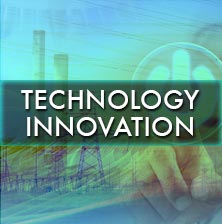The following is a small selection of items recently published by EPRI. To view complete lists of your company-funded research reports, updates, software, training announcements, and other program deliverables, log in at www.epri.com and go to Program Cockpits.

This report provides updated best practices and technology advances to protect power plant personnel from injury as a result of unintentional introduction of energy into a system or component.

Novel, high-efficiency power cycles using supercritical carbon dioxide as the working fluid can potentially provide low-cost, low-carbon coal-fired power generation. This study evaluated the performance and capital costs of two coal-fired power plants using gasification and a direct-fired supercritical carbon dioxide power cycle.

The Preventive Maintenance Basis Database is a web-based tool that power companies can use to develop maintenance strategies for plant components.

Because vegetation contact with power lines can lead to outages, fires, and threats to public safety, vegetation management is critical. This research compared the accuracy of LiDAR (light detection and ranging) and PhoDAR (aerial images combined with photogrammetric processing) technologies for mapping infrastructure and vegetation.

Entrainment occurs at power plants when eggs and larvae are pulled into cooling systems and exposed to heat, physical stress, and chemicals. Most technologies for reducing entrainment are costly to implement or have unproven benefits. Researchers designed and implemented a laboratory study to examine the ability of air bubble curtains to reduce entrainment of fish eggs and larvae.

Over the next decade, wind farm developers will consider technologies that enhance value by providing grid services and more reliable power delivery. This report discusses equipment that is likely to be integrated into onshore and offshore wind farms by 2030.

This research characterizes the safety benefits of accident tolerant fuel, based on the most up-to-date data. Researchers evaluated accident tolerant fuel under various accident scenarios.

This tool is for benchmarking radiation field data. Users can access interactive charts summarizing the most recently reported data, benchmark their plants relative to others, and save and download summary graphs.

This report summarizes the results of an eight-year project to develop a high-chromium, nickel-based filler metal for nuclear power applications that exhibits good resistance to cracking and has mechanical properties and corrosion resistance comparable to conventional high-chromium filler metals.

Public electric vehicle charging infrastructure in the U.S. has developed through a patchwork of funding, companies, and programs, often relying on proprietary software and subscriber service models. This paper is a cooperative effort of EPRI, the Edison Electric Institute, the Alliance for Transportation Electrification, the American Public Power Association, and the National Rural Electric Cooperative Association to identify key challenges related to achieving greater interoperability and open standards in the growing electric vehicle charging market.

This workshop convenes technicians with experience in power plant continuous emissions monitoring systems. They discuss experiences with compliance monitoring, reliability issues, and operation and maintenance of monitoring equipment.

TVA’s Paradise Plant developed a web application called TVA Asset360° to help staff find data needed to perform daily tasks. This report discusses the project to develop the application, including background, objectives, results, and lessons.